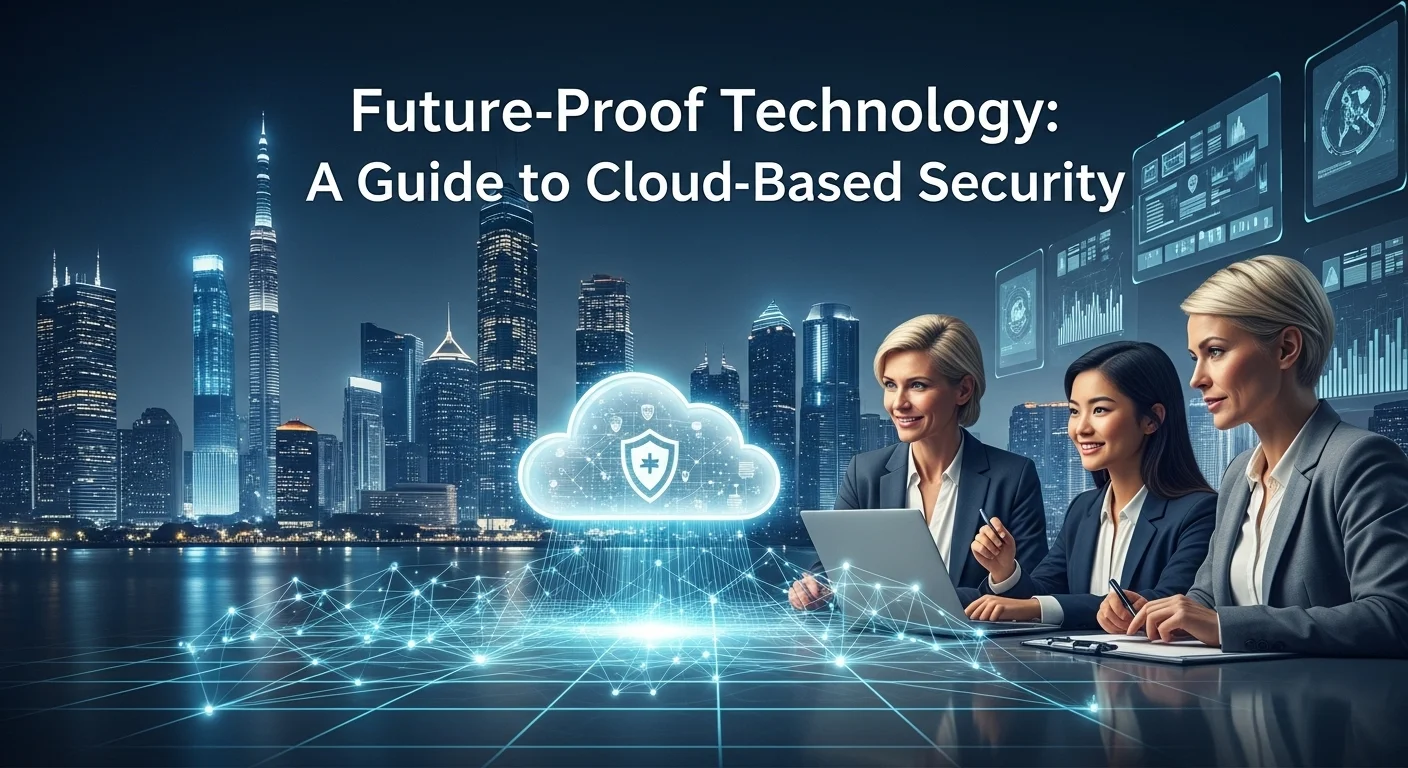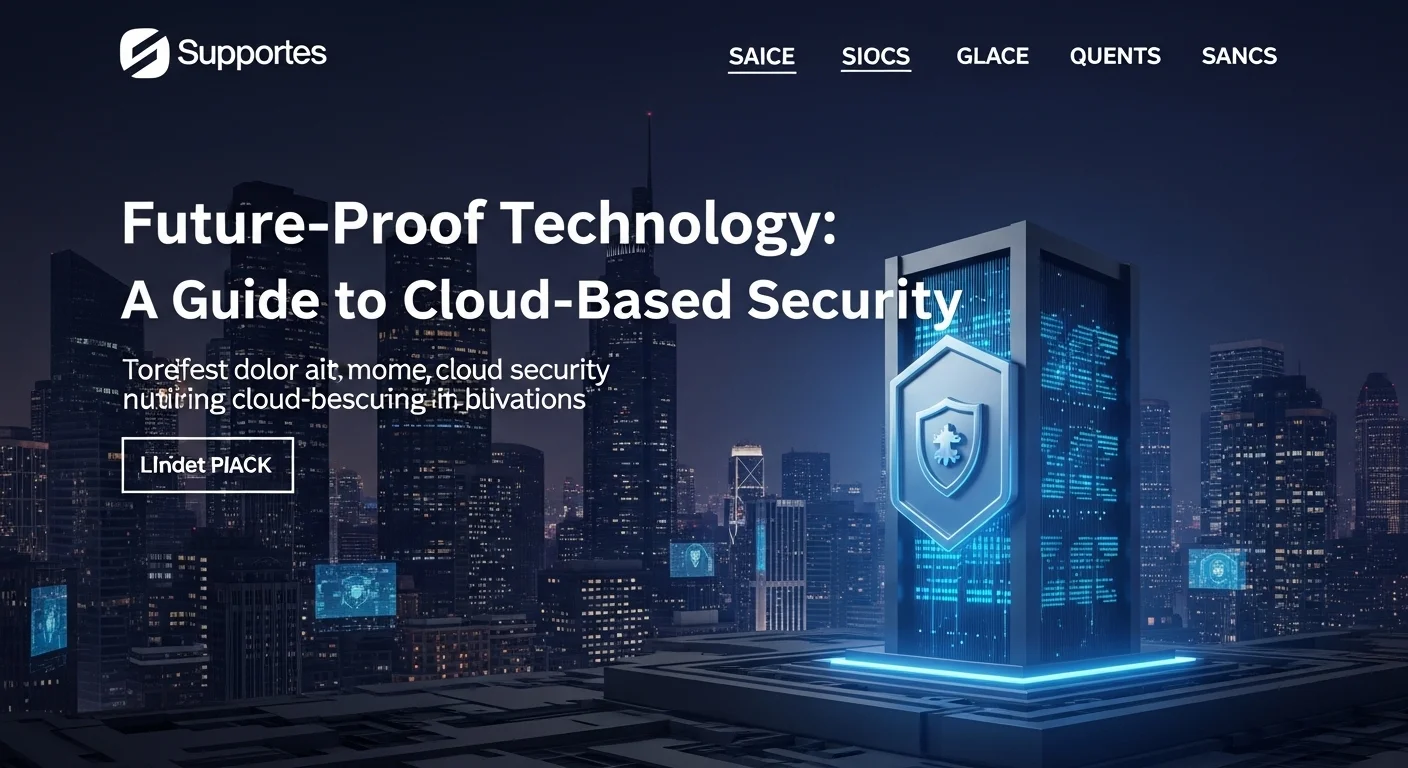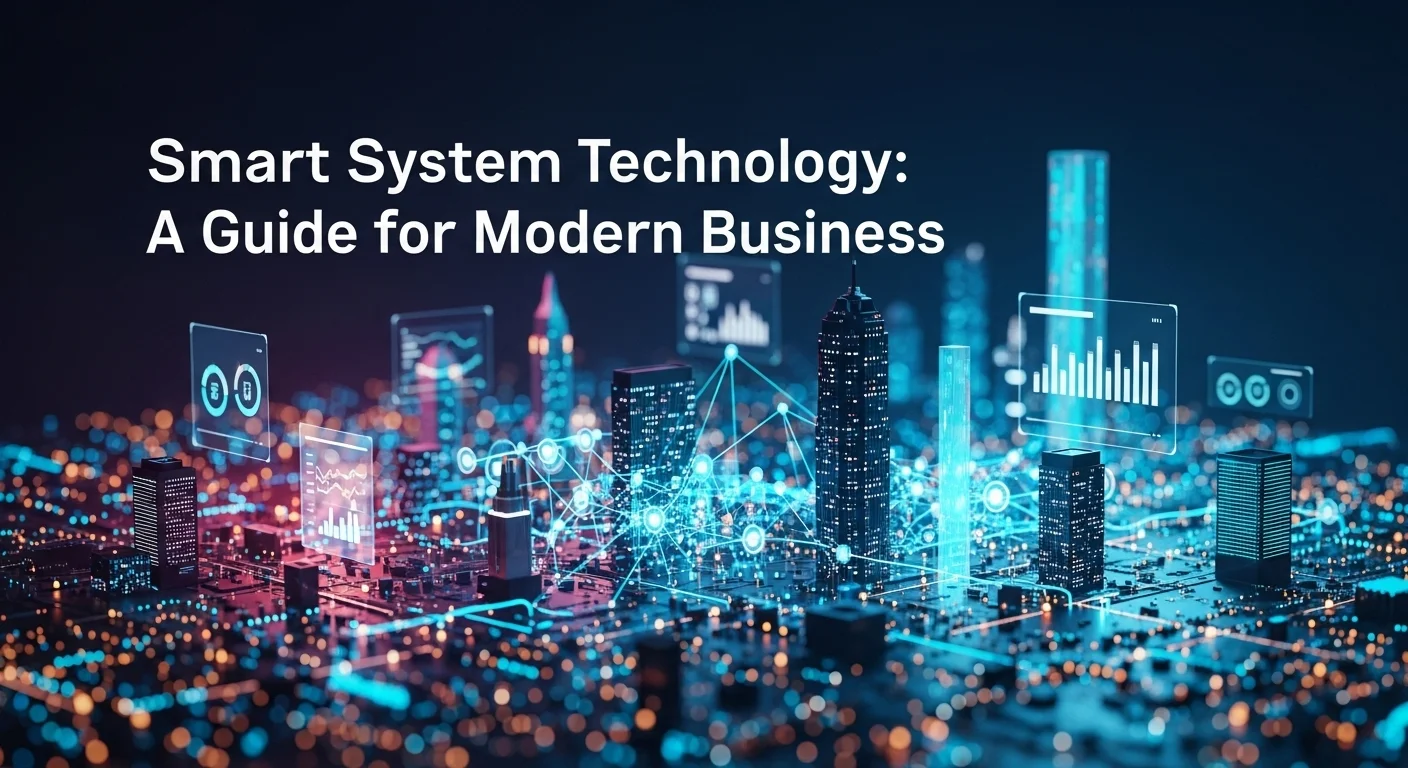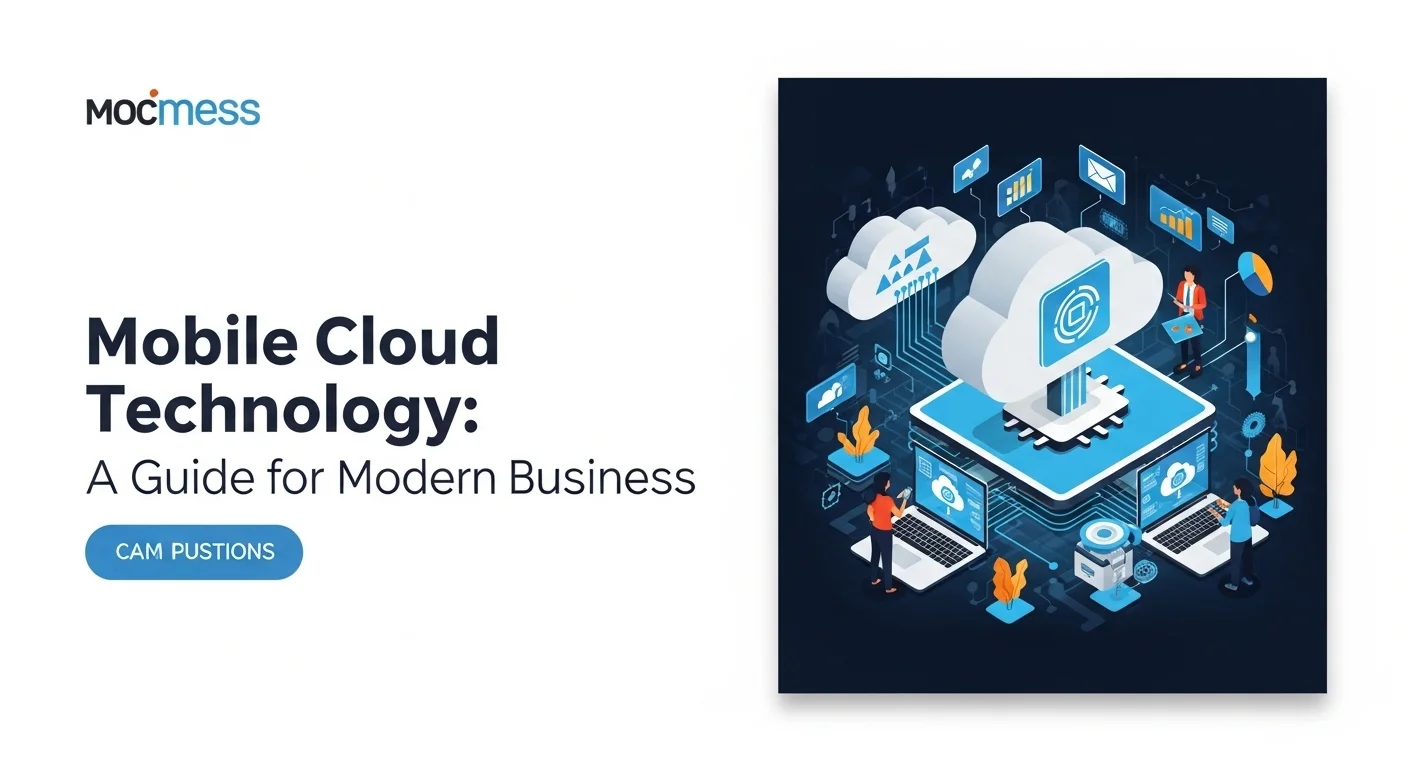Cloud Security Explained: My Practical Guide to Protecting Your Digital World

Executive Summary
In my years as a cybersecurity strategist, I've seen countless businesses move to the cloud, full of hope but often unprepared for the new security challenges. The old way of protecting your business—with servers locked in a back room—is over. Today, it’s all about 'Cloud-Based Security.' But what does that really mean for you? It's about protecting your data, your network, and all the devices your team uses, wherever they are. This isn't just for big corporations; it's essential for any business wanting to grow safely in our digital-first world. In this guide, I'll break down the essentials in plain English. We'll go from the basics of securing your cloud network to protecting your team's laptops and phones. My goal is to give you the confidence to use the cloud's amazing power without lying awake at night worrying about risks. Let’s build a secure foundation for your business's future, together.
Table of Contents
What Is Cloud Security and Why Should You Care?
Table of Contents
In the world of tech today, you'll hear a lot of buzzwords. Let's cut through the noise. When we talk about modern security, we're almost always talking about Cloud-Based Security. This is a huge shift from the old days when companies kept all their security hardware and servers in their own buildings. Now that our data, apps, and work itself live in the cloud, our approach to protecting it has to change too. It’s not just a trend; it’s a necessity. With remote work being the new normal and cyber threats getting smarter every day, understanding cloud security is your first line of defense. Think of it as a partnership. Your cloud provider (like Amazon, Google, or Microsoft) secures the physical buildings and their core network—the security *of* the cloud. Your job is to secure what you put inside it—your data, your users, and your applications. This is called the 'shared responsibility model,' and it's the foundation of every good cloud security plan I've ever built.
The Core Pillars of Modern Cloud Security
To really get a handle on cloud security, it helps to see it as a few key areas working together. It’s like building a fortress; you need strong walls, vigilant guards, and secure gateways to protect what's inside.
1. Cloud Security Posture Management (CSPM)
Imagine having a single dashboard that gives you a complete overview of your security across all your cloud services. That's what CSPM does. In my experience, one of the biggest risks in the cloud isn't a sophisticated hacker, but a simple misconfiguration—an open door left unlocked by mistake. CSPM tools are your security guards, constantly checking for these kinds of mistakes. They also automate compliance checks, making sure you’re aligned with standards like GDPR or HIPAA, and help you fix risks before they become real problems. A solid CSPM strategy is the bedrock of your entire cloud defense.
2. Cloud Network Security
The idea of a simple network 'perimeter' is a thing of the past. Your network is now a virtual web connecting your cloud resources to each other and the internet. Securing this virtual network is crucial. Here’s how we do it:
- Virtual Private Cloud (VPC): This is like creating your own private, fenced-off area within a public cloud. You control the layout, the addresses, and who gets in or out.
- Cloud Firewalls: These are your digital gatekeepers, filtering traffic to and from your cloud resources. Delivered as a service, they block malicious activity and enforce your access rules without you needing to manage any hardware.
- Secure Web Gateways (SWG): These tools protect your team from online threats by filtering their internet traffic, blocking malware and malicious websites before they can cause harm.
- Network Segmentation: This is a classic 'divide and conquer' strategy. We split the cloud network into smaller, isolated zones. If a hacker gets into one zone, the damage is contained and can't easily spread. It's a core principle for building a truly secure cloud network.
Getting your cloud network security right gives you back control, allowing you to protect against a huge range of attacks.
3. Cloud Endpoint Security
With so many of us working from coffee shops, home offices, and airports, our laptops, phones, and tablets have become the new front line. Securing these 'endpoints' is absolutely critical. Cloud-based endpoint protection has some big advantages over old-school antivirus software:
- Centralized Control: From one web console, you can see and manage the security of every single device, no matter where it is in the world. This means you can enforce policies consistently and spot advanced threats in real time.
- Smarter Threat Detection: These systems use the power of the cloud to analyze behavior and spot advanced threats like ransomware that older software would miss. I've seen them catch things that seemed invisible.
- Light and Fast: Because the heavy lifting (like scanning) is done in the cloud, the software doesn't slow down your team's devices. It's scalable and efficient, growing with you.
Protecting your endpoints means protecting your data at its most vulnerable point: where your people interact with it every day.
4. Cloud Internet Security
Beyond your own network, you have to secure how your organization interacts with the wild west of the public internet. Cloud-based internet security acts as a shield, filtering and inspecting your web traffic. This includes services like DNS Security, which blocks access to malicious sites before your browser even connects, and DDoS Mitigation, which absorbs massive traffic floods designed to take your website offline. It also involves Cloud Access Security Brokers (CASBs), which act as a security checkpoint between your users and cloud apps, preventing data leaks and unauthorized app usage—what we call 'shadow IT'.
The Real-World Impact on Your Business
So, why go through all this trouble? Adopting a strong cloud security strategy is transformative. First, it’s incredibly scalable. Your security grows as your business grows, without massive upfront costs for hardware. Second, you get access to world-class security. The big cloud providers pour billions into security, giving you a level of protection that’s nearly impossible to achieve on your own. Third, it enables your business to be agile. You can empower your team to work securely from anywhere, fostering productivity and collaboration. Finally, it simplifies everything. Managing your security from a single 'pane of glass' reduces complexity and makes proving compliance much easier. In short, a secure cloud environment isn't just a defensive measure; it's the foundation on which you build a modern, resilient, and successful business.

Your Complete Guide to Cloud Security Solutions
Rolling out effective cloud security is more than just just buying software; it’s about building a smart, layered defense. For any business I work with, the goal is always the same: create a secure cloud network that’s not just a fortress, but a launchpad for innovation. It's a core business function, not just an IT problem. This journey starts with understanding the modern architectural blueprints that are changing the game, like Zero Trust and SASE. Let's dive into the technical details and how to make the right strategic choices for your business.
Technical Frameworks You Should Know
The right architectural approach depends on your company's specific needs, but these frameworks are the gold standard for a reason.
1. Zero Trust Architecture (ZTA)
For years, the motto was 'trust but verify.' The old security model was like a castle with a moat: once you were inside, you were trusted. That model is broken. Zero Trust flips the script to 'never trust, always verify.' It assumes a threat could be anywhere, inside or out. Every single request to access a resource must be strictly verified. Here are the key ideas:
- Micro-segmentation: I mentioned this before, but it's central to Zero Trust. We create tiny, isolated security zones. If a breach happens, it's trapped in a small box and can't spread.
- Strict Identity Control: Access is granted on a 'need-to-know' basis. Users and apps get the absolute minimum permissions required to do their job. And multi-factor authentication (MFA) isn't optional; it's mandatory.
- Continuous Verification: It's not a one-time check. The system constantly monitors behavior, looking for anything unusual that might signal a compromised account.
I always tell clients that adopting a Zero Trust mindset is the single most important step in modernizing their security.
2. Secure Access Service Edge (SASE)
SASE (pronounced 'sassy') is a game-changer. It's a cloud-native framework that combines your networking and security services into one unified platform. Think of it as merging a super-fast highway with a high-tech security convoy. It’s designed to give all your users—at home, in the office, or on the road—fast and secure access to applications. SASE bundles network security functions with a suite of tools like Zero Trust Network Access (ZTNA), CASB, and Secure Web Gateways. By delivering security from the cloud edge, close to your users, it cuts down on lag, simplifies management, and ensures everyone gets the same level of protection. It’s the blueprint for the future of business security.
3. Cloud-Native Application Protection Platforms (CNAPP)
As we build apps differently, using modern tools like containers and serverless functions, we need a new way to protect them. A CNAPP is an integrated platform built to secure these cloud-native applications from the first line of code to final deployment. It brings together several key functions: it scans your cloud infrastructure for misconfigurations (CSPM), protects individual workloads like containers (CWPP), and, most importantly, it injects security directly into the development pipeline ('DevSecOps'). Finding and fixing a vulnerability before an app ever goes live is infinitely better than patching it in a panic later.
Making the Right Business Decisions
Technology is only half the battle. Making smart business choices is what makes it all work.
1. Starting with a Cloud Risk Assessment
You can't protect what you don't understand. The first step is always to conduct a cloud risk assessment. Identify your crown jewels (critical data and apps), figure out who might want to steal them, and find the weak spots in your defenses. This process helps you focus your time and money where they'll make the biggest difference. CSPM tools are a huge help here, as they can automate a lot of this discovery work for you.
2. How to Choose the Right Security Partner
The security market is crowded. When I'm helping a client choose a vendor, I look for a few key things:
- Seamless Integration: Does it play well with others? The solution must integrate smoothly with your cloud providers and developer tools. A single platform that does multiple things well can be a lifesaver.
- Scale and Performance: Can it keep up as you grow? Look for solutions built in the cloud that won't slow you down.
- Real-Time Intelligence: How smart is it? The best vendors use AI and machine learning to spot new threats as they emerge. This is what separates good security from great security.
- Human Support: When things go wrong, can you get an expert on the phone? Don't underestimate the value of great customer support.
3. Moving from On-Premise to the Cloud
For most, this is a gradual journey. Here’s a simple roadmap:
- Embrace the Hybrid World: You'll likely have one foot on-premise and one in the cloud for a while. Your security tools need to provide a single view across both.
- Focus on Identity First: In a world without perimeters, identity is your new control plane. Build a strong foundation with single sign-on (SSO) and MFA.
- Go Cloud-Native: Slowly phase out your old hardware appliances and replace them with modern, cloud-native services. They're built for the flexibility and scale of the cloud.
- Automate, Automate, Automate: Use automation to manage configurations, respond to threats, and ensure compliance. You can't manage the cloud at scale manually.
Comparing Your Options: Native vs. Third-Party Tools
The big cloud providers (AWS, Azure, Google) offer powerful security tools that are tightly integrated into their platforms. They're a great place to start. However, I often find that third-party solutions offer a crucial advantage: they can manage security across multiple clouds from a single dashboard. Many businesses I work with use a mix of both—leveraging the best native tools while using a third-party platform to tie it all together. For more structured guidance, I highly recommend looking at frameworks from NIST and the Cloud Security Alliance (CSA). They offer invaluable best practices for building a secure cloud environment.

Actionable Tips to Master Your Cloud Security
Getting your cloud security right is a marathon, not a sprint. It’s an ongoing process of refining your tools, following best practices, and building a security-first culture in your team. In this final section, I want to share some practical tips and strategies I've learned over the years to help you build a cloud security framework that’s not just strong, but also efficient. These are the steps that turn security from a roadblock into a business accelerator, ensuring your secure cloud network is a true asset.
Best Practices for a Resilient Cloud
These are the non-negotiable principles that should form the foundation of any cloud security program I design.
1. Truly Understand the Shared Responsibility Model
This is the most fundamental concept, yet it's where I see the most mistakes. You must be crystal clear about what your cloud provider handles and what you're responsible for. For instance, with Infrastructure-as-a-Service (IaaS), the provider secures the data center, but you are 100% responsible for securing your operating systems, network settings, user access, and data. Regularly review the provider's documentation and make sure your team knows their exact duties. Assuming the provider is handling something that they aren't is a recipe for disaster.
2. Making Identity and Access Management (IAM) Your Fortress
In the cloud, your user's identity is the new perimeter. A weak Identity and Access Management strategy is like leaving the front door wide open.
- Live by the Principle of Least Privilege: Give people and services only the bare minimum permissions they need to do their jobs. Nothing more. Review these permissions regularly and cut back anything that's not being used.
- Mandate Multi-Factor Authentication (MFA): Make MFA mandatory for everyone, especially administrators. It's one of the simplest and most effective ways to stop account takeovers.
- Centralize Identity with Single Sign-On (SSO): Use a central identity provider to manage all your users. This ensures you can enforce consistent policies across every app and service you use.
- Rotate Credentials Religiously: Enforce policies for changing passwords and, even more critically, the access keys used by your applications. If a key is no longer needed, delete it immediately.
3. Encrypt Everything, Always
Your data is your most valuable asset. Treat it that way by encrypting it everywhere.
- Data in Transit: Use strong TLS encryption for all data moving between your users and your apps, and between different services within your cloud.
- Data at Rest: Encrypt all data sitting in your databases, storage buckets, and on virtual hard drives. The major cloud providers make this easy to do.
- Manage Your Own Keys: For extra security and control, consider using a 'Customer-Managed Key' (CMK) strategy. This means you hold the keys to your own encrypted data, which can be a critical requirement for compliance.
4. Securing Every Endpoint and Workload
Your security must extend to every laptop, server, container, and function that touches your data. A complete endpoint security strategy is a must.
- Deploy Advanced Endpoint Protection: Use a modern, cloud-managed Endpoint Detection and Response (EDR) tool. These use AI and behavioral analysis to spot threats that old antivirus software would never see.
- Stay on Top of Patching: Keep all your software and operating systems updated with the latest security patches. Vulnerability scanners can help you find what needs updating automatically.
- Secure Your Modern Apps: Don't forget your containers and serverless functions. Scan container images for flaws before you deploy them, and use runtime protection to watch for suspicious activity inside them.
My Go-To Tools and Tech Experiences
The right tools can make all the difference. Here are a few categories I find essential:
- Cloud Security Posture Management (CSPM): Tools from vendors like Wiz, Orca Security, or Palo Alto Networks are fantastic for giving you that 360-degree view of misconfigurations and risks across all your cloud accounts.
- Security Information and Event Management (SIEM): A cloud-native SIEM like Microsoft Sentinel or Splunk is vital. It gathers logs from all your systems and uses AI to connect the dots, find real threats, and speed up your response.
- Cloud-Native Application Protection Platform (CNAPP): If you're building modern apps, a CNAPP is your all-in-one solution for securing them from code to cloud. It's an investment that pays for itself.
A Final Word: The Importance of Incident Response
I've learned one thing for sure: no system is perfect. You will face a security incident at some point. A well-rehearsed Incident Response (IR) plan is what separates a minor issue from a major catastrophe. Your plan should detail exactly who does what when an incident occurs. Practice it with tabletop exercises. A calm, coordinated response can minimize damage and get you back to business faster. This planning is the sign of a truly mature security organization.
For Deeper Learning: A Quality Resource
If you're looking to build a world-class security program, you need to align with proven standards. The NIST Cybersecurity Framework is my go-to recommendation. It provides a comprehensive, risk-based approach to managing cybersecurity. It's not a rigid set of rules, but a flexible set of guidelines and best practices. You can explore it on the official NIST website: https://www.nist.gov/cyberframework. Adopting its principles will put you on a structured path to dramatically improving your security posture.
In the end, achieving excellent cloud security is an active, ongoing commitment. It's about weaving together strong network security, vigilant endpoint protection, and smart internet security into a single, cohesive strategy. By embracing these best practices and using modern tools, you can build a trusted, resilient, and secure cloud environment that not only protects your business but also powers its growth and innovation.
Expert Reviews & Testimonials
Sarah Johnson, Business Owner ⭐⭐⭐⭐
A great starting point! As a business owner, I was hoping for more practical examples I could apply directly, maybe a checklist for small businesses?
Mike Chen, IT Consultant ⭐⭐⭐⭐
This was a very helpful deep dive. It clarified a lot about cloud security for me. Some of the technical frameworks were a bit dense, but overall, a solid resource for IT pros.
Emma Davis, Tech Expert ⭐⭐⭐⭐⭐
Absolutely fantastic! This is one of the most comprehensive and clearly written articles on cloud security I've read. It perfectly breaks down complex topics like SASE and CNAPP. A must-read for anyone in the tech field.



